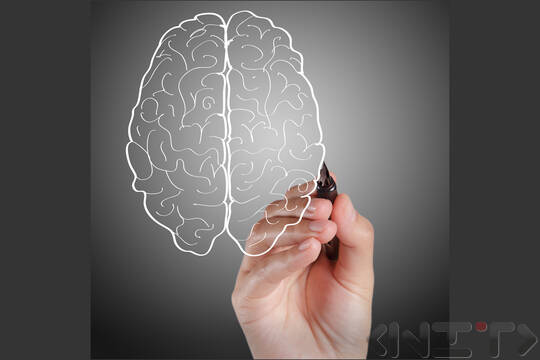
Approximate reading time: 1m 39s
It can function at different levels and in many ways simultaneously. Thoughts, feelings, imagination, premonition and physiology work simultaneously and interactively, and separately interact and exchange information with the environment.
The most exciting, but perhaps the most frightening part related to the results of brain research is that we can influence each other's thoughts all the time. As long as we know how!
We challenge you with a little imagination exercise! The brain consists of three main structures: the cerebrum, the spinal cord and the bone marrow. The largest part of the human brain (the cerebrum) is covered and protected by a thin layer called the cerebral cortex. This thin layer of nerve cells represents about 70 percent of the nervous system and is designed to collect and decipher patterns obtained in the brain by identifying relationships between objects, data, and other stimuli. It is further divided into left and right hemispheres and consists of four areas, each responsible for a different function.
The frontal area is the one around the forehead and is responsible for activities such as problem solving, creative thinking, planning and organizing, and decision making. The temporal lobe is located on both the left and right side of the head. The temples are charged with functions such as sound recognition, processing, language meaning, and also memorization. In the upper back part of the brain is the other area that receives sensory data that aids speech.
In the occipital middle part of the brain is located the area that has responsibility for vision. Some scientists believe that there is a fifth area in the midbrain called the limbic system. The limbic system accounts for 20 percent of the brain's volume. This area is responsible for regulating the body, emotions, attention, sleep, hormone production, sexuality and smell.
Because of the brain's ability to multitask at the same time and process many stimuli simultaneously and at different levels, we must remember that using a traditional structured or linear approach to learning can cause a real disaster. Although we seem to think sequentially - one thought after another - this illusion is far from the reality of our brain's true operating system. Biologically, physically, intellectually and emotionally, we do many things at the same time. In reality, our brains cannot do just one thing!
Implementing a strategy that involves step-by-step presentation of information and presentation of ideas or concepts can quickly bore learners and make them feel like they are wasting their time. And no one wants that exact reaction to follow, which is inevitably associated with a loss of confidence and lack of future engagement.
Source: The Creative Training Idea Book, Inspired Tips and Techniques for Engaging and Effective Learning, ROBERT W. LUCAS.